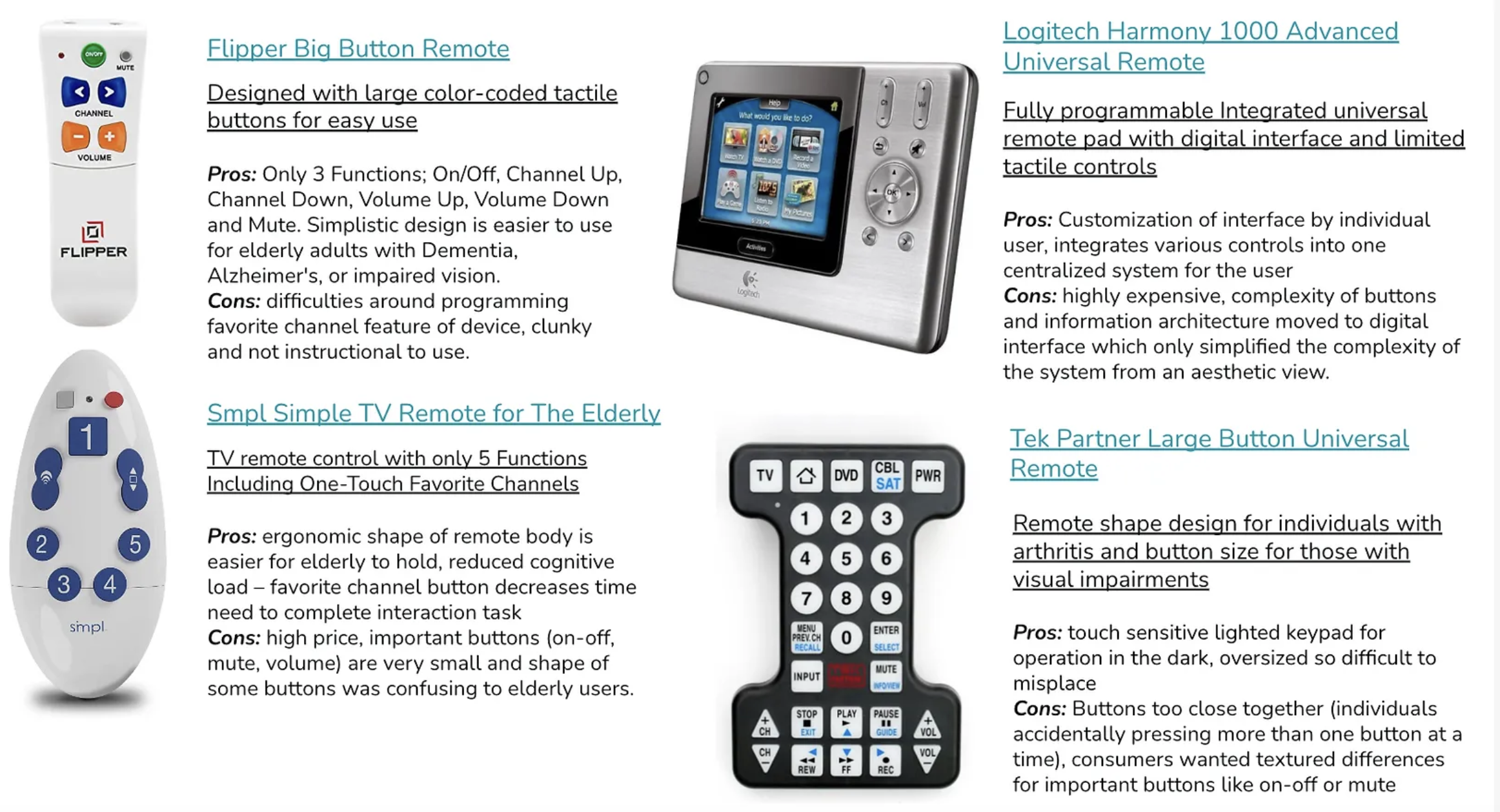Improving the Design of the Samsung Universal TV Remote for Elderly Adults
Assistive Design (spring 2024)
Problem Statement:
Elderly adults have the problem that declining cognitive, visual, and motor skills make utilizing tv remotes arduous. Our solution should improve the universal tv controllers ease of use to provide elderly adults with greater independence.
Consumer Requirements
Intended Audience:
Elderly adults (60+)
People over age 65 spend more than 25% of their waking hours watching TV.
Usually only watch the same 5-6 channels on average.
Declining cognitive, motor, and visual skills that impede their use of complex products like this one.
User Pain Points (Physical & Sensory Limitations):
Reduced Visual Capabilities
Decline in color perception, visual acuity, and field of vision.
Impacts how elderly users interact with buttons, colors, and lights often used to navigate tv remotes.
Memory, Cognition, Concentration
Impairments to attention, short term working memory, processing speed, information retrieval, and problem-solving.
Find it more difficult to navigate complex task sequences or interface layouts.
Configuration of buttons and quantity of controls on tv remotes pose navigational challenges for elderly adults.
Declining Motor Skills
Largest declines in upper extremity functioning in hand-force steadiness, speed of hand-arm movements, and vibration sense.
Grip of remote handle may impact which button controls are accessible on tv remote for elderly individuals.
Initial Sketches:
CAD Design:
Market Research:
How Our Redesign Fulfills Elderly Users’ Needs:
We took some common frustrations that the elderly report including arthritis, poor vision, and unclear controls and implemented as many as we could into our design.
Shortcomings:
Voice control is difficult to use sometimes so the remote may not pick up the right words unless clearly articulated by the user.
We cannot cater to people of every size so there is no way the remote could be ideal for all grip sizes.
The signal between the TV and the remote could be obstructed causing lag.
What We Learned:
Lots of different designs can address the same needs.
It’s important to take into account all aspects of design to create a product that can help your user.
Including: anthropomorphics, color, contrast, icons, negative space, user intuition,/schemas, heuristics and more.
Next Steps:
Create a real prototype and test it out with our demographic to see what insights they can provide for product improvement.
Create a new design that addresses our shortcomings and incorporates findings from usability testing with our target users.




